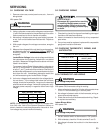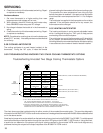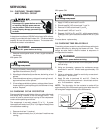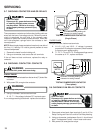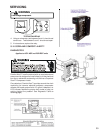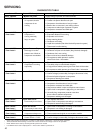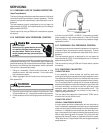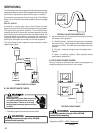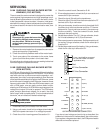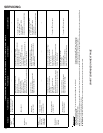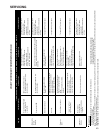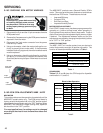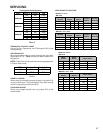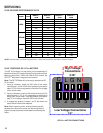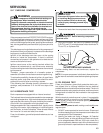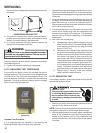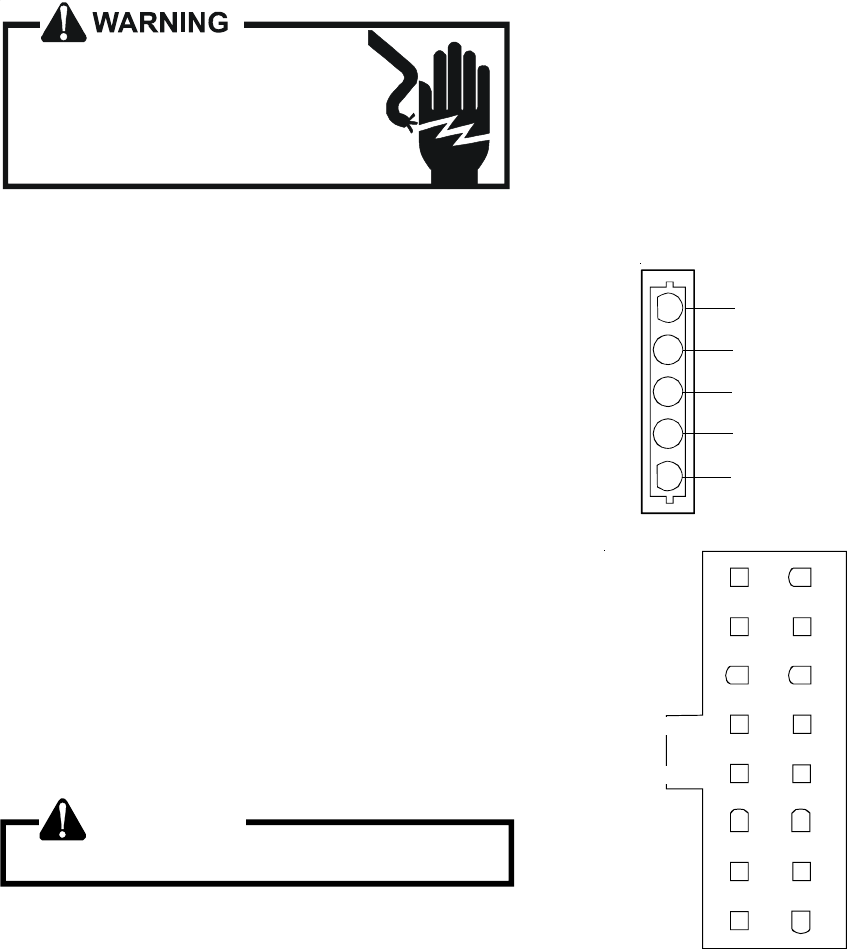
SERVICING
43
S-16A CHECKING FAN AND BLOWER MOTOR
WINDINGS (PSC MOTORS)
The auto reset fan motor overload is designed to protect the
motor against high temperature and high amperage condi-
tions by breaking the common circuit within the motor, similar
to the compressor internal overload. However, heat gener-
ated within the motor is faster to dissipate than the compres-
sor, allow at least 45 minutes for the overload to reset, then
retest.
HIGH VOLTAGE!
Disconnect ALL power before servicing
or installing. Multiple power sources
may be present. Failure to do so may
cause property damage, personal injury
or death.
1. Remove the motor leads from its respective connection
points and capacitor (if applicable).
2. Check the continuity between each of the motor leads.
3. Touch one probe of the ohmmeter to the motor frame
(ground) and the other probe in turn to each lead.
If the windings do not test continuous or a reading is obtained
from lead to ground, replace the motor.
S-16B CHECKING FAN AND BLOWER MOTOR
(ECM MOTORS)
An ECM is an Electronically Commutated Motor which offers
many significant advantages over PSC motors. The ECM has
near zero rotor loss, synchronous machine operation, vari-
able speed, low noise, and programmable air flow. Because
of the sophisticated electronics within the ECM motor, some
technicians are intimated by the ECM motor; however, these
fears are unfounded. GE offers two ECM motor testers, and
with a VOM meter, one can easily perform basic trouble-
shooting on ECM motors. An ECM motor requires power (line
voltage) and a signal (24 volts) to operate. The ECM motor
stator contains permanent magnet. As a result, the shaft
feels "rough" when turned by hand. This is a characteristic of
the motor, not an indication of defective bearings.
WARNING
Line Voltage now present.
1. Disconnect the 5-pin connector from the motor.
2. Using a volt meter, check for line voltage at terminals #4
& #5 at the power connector. If no voltage is present:
3. Check the unit for incoming power See section S-1.
4. Check the control board, See section S-40.
5. If line voltage is present, reinsert the 5-pin connector and
remove the 16-pin connector.
6. Check for signal (24 volts) at the transformer.
7. Check for signal (24 volts) from the thermostat to the "G"
terminal at the 16-pin connector.
8. Using an ohmmeter, check for continuity from the #1 & #3
(common pins) to the transformer neutral or "C" thermo-
stat terminal. If you do not have continuity, the motor may
function erratically. Trace the common circuits, locate
and repair the open neutral.
9. Set the thermostat to "Fan-On". Using a voltmeter, check
for 24 volts between pin # 15 (G) and common.
10. Disconnect power to compressor. Set thermostat to call
for cooling. Using a voltmeter, check for 24 volts at pin #
6 and/or #14.
11. Set the thermostat to a call for heating. Using a voltmeter,
check for 24 volts at pin #2 and/or #11.
1
2
3
4
5
Lines 1 and 2 will be connected
for 12OVAC Power Connector
applications only
Gnd
AC Line Connection
AC Line Connection
}
11
19
2
3
4
5
6
7
816
15
14
13
12
10
OUT - OUT +
A
DJUST +/-
G (FAN)
Y1 Y/Y2
COOL
EM Ht/W2
DELAY
24 Vac (R)
COMMON2
HEAT
W/W1
BK/PWM (SPEED)
COMMON1 O (REV VALVE)
16-PIN ECM HARNESS CONNECTOR
If you do not read voltage and continuity as described, the
problem is in the control or interface board, but not the motor.
If you register voltage as described , the ECM power head is
defective and must be replaced.



